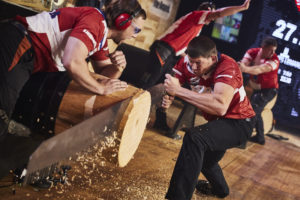 Adventure sports like rock climbing, mountain biking, surfing, and skydiving provide an adrenaline rush and amazing visuals. As more people take up extreme sports as a hobby, they want to capture epic footage to share with friends or post online. However, recording high-quality videos or photos during fast-paced, high-risk sports requires specialized equipment and skills. This guide will walk you through the essential gear and techniques for properly documenting your extreme adventures.
Adventure sports like rock climbing, mountain biking, surfing, and skydiving provide an adrenaline rush and amazing visuals. As more people take up extreme sports as a hobby, they want to capture epic footage to share with friends or post online. However, recording high-quality videos or photos during fast-paced, high-risk sports requires specialized equipment and skills. This guide will walk you through the essential gear and techniques for properly documenting your extreme adventures.
Cameras
When it comes to action cameras, the most popular choices are GoPro models like the Hero 10 Black or DJI Action 2. These compact and durable cameras offer high resolution, built-in stabilization, and a wide lens to capture the full experience. Many adventure athletes love the versatility of 360 cameras like the Insta360 One X2 or GoPro Max. Pointing in all directions, 360 cams allow you to capture every angle and achieve unique effects during editing. Mirrorless or DSLR cameras like the Sony A7 IV or Nikon Z9 can provide boosted image quality, advanced controls, and lens versatility for dedicated sports photographers. The Impossible Project has reviewed the best cameras for sports to help you choose the best one for your needs.
Mounts
Securing your camera is crucial for extreme sports. Headstrap, chest, and helmet mounts keep the action steady and hands-free. For surfing, opt for a mouth mount or wrist housing to get in the water. Suction cup mounts, floating handgrips, and pole mounts allow you to capture hard-to-reach angles. Combining multiple mounts, like a helmet cam with a bike handlebar mount, provides complementary perspectives. Pick mounts that are sturdy and safe enough for your sport but that don’t restrict movement.
Power
Having spare batteries and backup power banks is essential when shooting for hours outdoors. For longer events, consider an external battery pack or swapping multiple charged batteries to avoid losing power at a crucial moment. If you will be bringing lots of gear, use a portable solar charger to juice up devices on the go. Waterproof, high-capacity SD cards allow you to record high-res footage without swapping cards.
Camera Settings
To capture fast action clearly, use shutter speeds of at least 1/500th sec or higher and shoot in 1080p or 4K resolution if possible. Lens stabilization or a gimbal helps compensate for vibration and uneven terrain. To convey speed, use a faster frame rate like 60fps or 120fps. For slow motion, 240fps or higher immerses viewers in the moment. Set your ISO lower in daylight and higher in the shade/darkness when the aperture can’t compensate.
Editing
Quality editing turns raw clips into a professional-looking video. Color correct shaky footage and adjust lighting inconsistencies. Cut together the best views and highlight epic moments like jumps and crashes. Speed ramping emphasizes the intensity of the sport. Photo editing apps make it easy to apply premade filters to add style to static shots. Overlay graphics like speed, distance, heart rate monitor readings, or mapping data to enhance the visuals.
Safety Tips
When recording dangerous sports, protecting yourself and your gear should be the priority. Only use camera mounts designed for impact protection and test equipment at low speeds/altitudes first. Avoid placing mounts where they could hit you or get tangled during movement. Bring backups of key items in case something breaks or detaches. Tell a friend your route and check the weather/trail conditions to avoid hazardous filming situations. Pay attention to your surroundings instead of checking shots mid-activity. Following basic precautions will allow you to get amazing content while staying safe on your next extreme adventure.
Capturing unique content during high-speed action sports takes the right camera gear and techniques tailored to your sport. With a durable action cam, stabilized mounts, ample power, smart settings adjustments, and quality editing, your videos and photos will transport viewers right into the action. Just remember to put safety first whenever attempting to document extreme sports. Following this guide will help you get epic share-worthy shots of your next big adventure.


